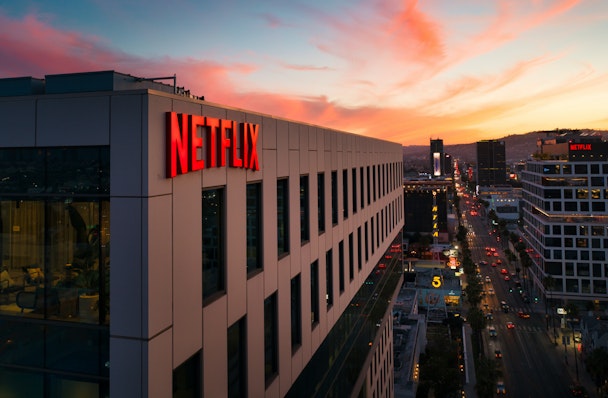Rediscovering the disruptor mindset: how Netflix can evolve with a changing industry
Siegel+Gale’s Mick Smyth digs into Netflix’s hopes of weathering a storm of subscriber losses and increasing competition.

Can Netflix weather the storm it's facing? / Venti Views via Unsplash
For over a decade, Netflix has been a, if not the, leader in video-on-demand. Growing from mailed rental DVDs to streaming to content creation to Oscar winner, the brand has innovated exceptionally to disrupt the core of an entire industry. However, although subscriber numbers peaked during the pandemic, things have become complicated of late.
While the pandemic provided the brand with a golden opportunity to boost growth, that same opportunity was also afforded to competitors, many of whom had a pre-existing content catalog. The cost-of-living crisis, increased competition, and a subscriber base with more time to consume content pushed customers to seek entertainment beyond the incumbent. Netflix subscriber numbers have been fluctuating; April 2022 saw their first decline in over ten years. The company share price took a hit following concerns within the business of a further loss of 2 million subscribers; layoffs soon followed.
To counter the consequences of solidified competition and fluctuating customer numbers, Netflix announced several new policy changes. From a new payment tier with an ad-based model to a clampdown on password sharing, the brand is actively seeking new revenue streams. This reflects its desire to move away from subscriber numbers and use revenue and profit as the key metric for success, signaling a potential refocusing of its priorities.
The landscape has changed
Netflix recognizes that the market is now saturated. It also understands that it has likely hit the glass ceiling of the maximum number of subscribers it can expect at any time. Compounded by possible over-consumption of content during the pandemic and new content potentially taking years to be produced, driving new subscribers through new content is looking less like a viable short-term strategy for Netflix.
To deliver on shareholder expectations of growth, the brand is now tasked with finding new ways of increasing revenue without relying on increasing user numbers. However, shareholder expectations and customer expectations may not align. Unfortunately, this revenue increase will likely mean a hit to current customers in one form or another.
Increasing complexity does not go unnoticed
Consumers may already feel like they’re being left behind. Suggestions that Netflix is prioritizing profit over programming have been circulating for some time. Accusations abound of the brand maximizing profits by canceling successful shows in favor of new investments to avoid increased fees for actors and production crews.
Viewers opting for the new cheaper, ad-based model also appear to be suffering from a lack of access to some content on the platform. The “one simple subscription” still touted by Netflix is looking increasingly complex.
Social media is swimming with people sharing their experiences with the platform’s service changes. From college students living between campus and home to people that travel for work, frustrations are being aired around a lack of consideration for their unique situations. Many have promised to cancel their subscriptions, some of which have been in place for over a decade.
Advertisement
Customers are partners and should be brought along on any journey of change
In truth, Netflix is at a crossroads. Currently, it is the only genuinely profitable streaming service (if it is to be believed). But it operates within an increasingly competitive market. The innovations that separated it from traditional television – the lack of advertising and the ability to binge-watch – are slowly being eroded. Increasing revenue while keeping customers satisfied requires delicate balancing.
Customers are partners and should be brought along on the journey of any major business changes. This is something that, up to now, the brand has always considered. Netflix has long used its brand purpose, ‘entertain the world’, to guide its decision-making. Above all else, entertainment was the disruptor’s most crucial aspect. Has that changed? Has Netflix’s reason for being altered along with its key metrics?
Don’t lose who you are
From its inception, Netflix has sought to do things differently. To make it simpler for people to access the best content wherever they are – driving an industry on a journey of innovation and ensuring customer expectations are aligned with the business.
Difficult decisions must be made as the industry evolves and becomes more competitive. That’s inevitable. But it would be a shame for a brand to lose what customers have come to love it for.
Advertisement
Content by The Drum Network member:

Siegel+Gale
Siegel+Gale is a global branding company headquartered in NYC. Our core expertise spans brand development, brand strategy, design, and customer experience.
Find out more
